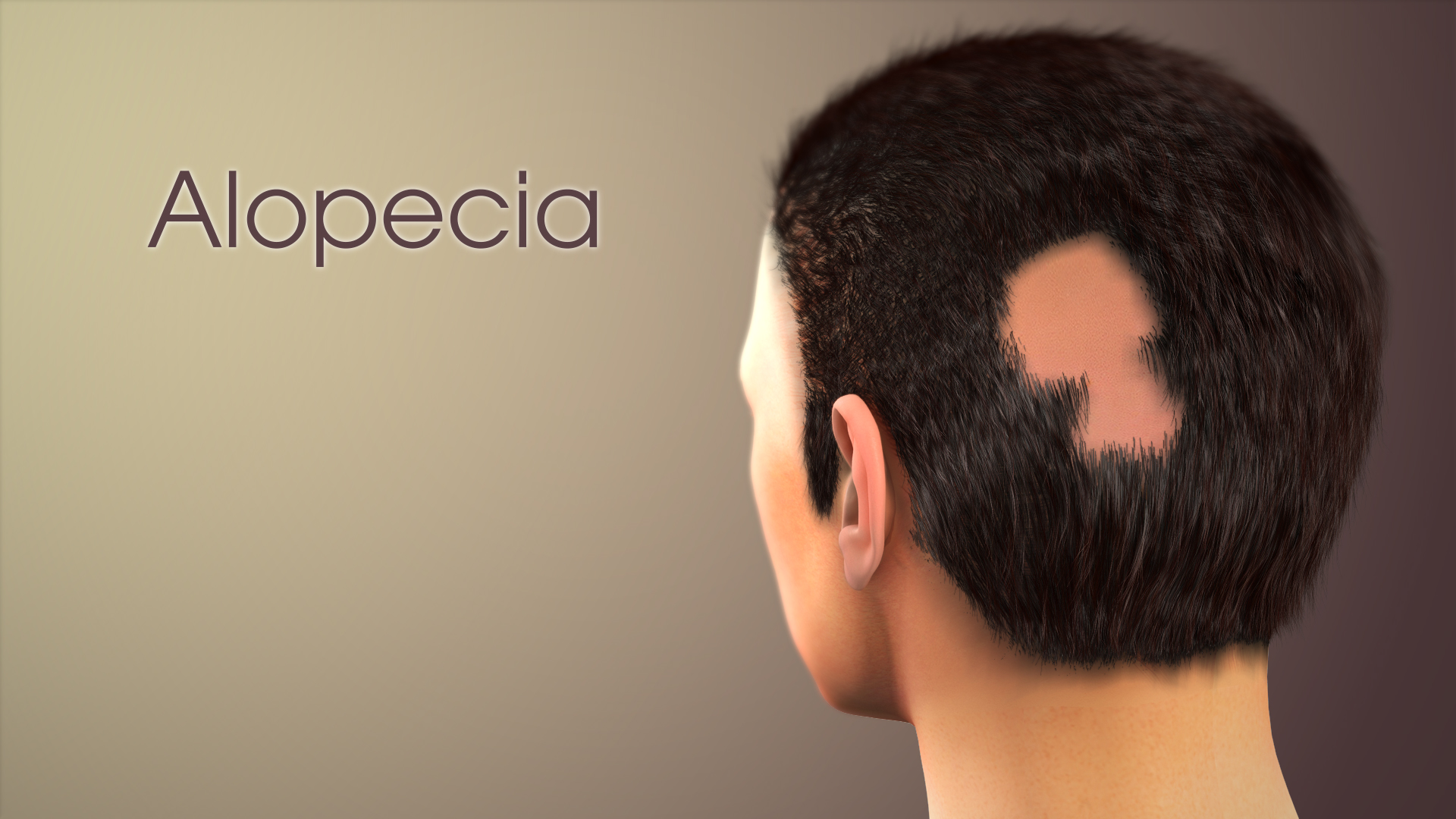Alopecia areata is a condition that causes hair loss, leading to bald spots on some body parts (often the scalp and beard). The exposed skin patches can be of various shape or may appear normal. The disease may go into remission or may be permanent. It commonly occurs in children and some cases of babies born with alopecia have been reported.

Causes
Alopecia areata is an autoimmune disorder, the body attacks its own hair follicles and suppresses hair growth. T cells cluster around the affected follicles, causing inflammation and subsequent hair loss.
The condition is not contagious, but can be hereditary. In fact, Alopecia areata shares genetic risk factors with other autoimmune diseases, including rheumatoid arthritis, type 1 diabetes, and celiac disease.
Treatment Options
There are no existing therapies to cure or prevent it. Spontaneous remission of alopecia is unpredictable.
People suffering from severe hair loss, medications and injections of corticosteroids may help. Topical corticosteroids often fail to penetrate the skin deeply enough to affect the hair bulbs that are the target of treatment and small lesions usually regrow spontaneously as well. Oral corticosteroids may reduce hair loss, but its effect is temporary and likely to lead to severe side effects.
Photochemotherapy (light therapy) is also sometimes performed with an oral medication.
Alopecia areata associated with celiac disease can be treated with a gluten - free diet. It enable the scalp and other body hair to regrow completely and permanently as the immune response get normalized.
Alternative home remedies like aromatherapy, acupuncture, probiotics, aloe vera drinks and topical gels, rubbing onion juice on the scalp may also be useful for some people, however there are no clinical tests to prove their success.
Research Trends
Scientists and researchers are focussing on the connection between hair loss and other health issues. Vertex baldness is believed to be a marker of coronary heart disease and is more closely associated with atherosclerosis than frontal baldness.
Environmental factors are also under review. A study controlled for age and family history indicated that smoking may be a factor associated with age-related hair loss among Asian men.
Aging of the hair follicle appears to be primed by a cellular response to the DNA damage that accumulates in renewing stem cells during aging. Proteolysis of collagen leads to elimination of the damaged cells and then to terminal hair follicle miniaturization.
Disclaimer: The information in no way constitutes, or should be construed as medical advice. Nor is the above article an endorsement of any research findings discussed in the article an endorsement for any of the source publications.

Rosacea: Types, Causes, and Treatment
Rosacea is a skin disease characterized by redness, particularly in the central regions of the face. The nose, cheeks, forehead and chin are the key hotspots where rosacea becomes prominent due to increased blood flow. Read More..

Psoriasis: Types, Symptoms, Causes, and Treatment
Psoriasis is an autoimmune disorder which affects the skin. It is a long term inflammatory skin condition. It occurs due to rapid production of the skin cells. Read More..








